What is
SAINT Protocol TMS?
And How Does it Compare to
MeRT Treatment?
SAINT Protocol TMS for Treatment-Resistant Depression
You may have read about a new form of TMS (transcranial magnetic stimulation) called the SAINT Protocol.
SAINT was developed to treat TRD or Treatment-Resistant Depression. This form of depression is more common than you may realize, as approximately 30% of people with Major Depressive Disorder are resistant to treatment.
This new treatment protocol is all the buzz — and for a good reason. Studies show that SAINT can achieve significant results in reducing depression symptoms in as little as five days.
So, what is SAINT Protocol TMS? How does it work? And how does it compare to MeRT treatment for depression?

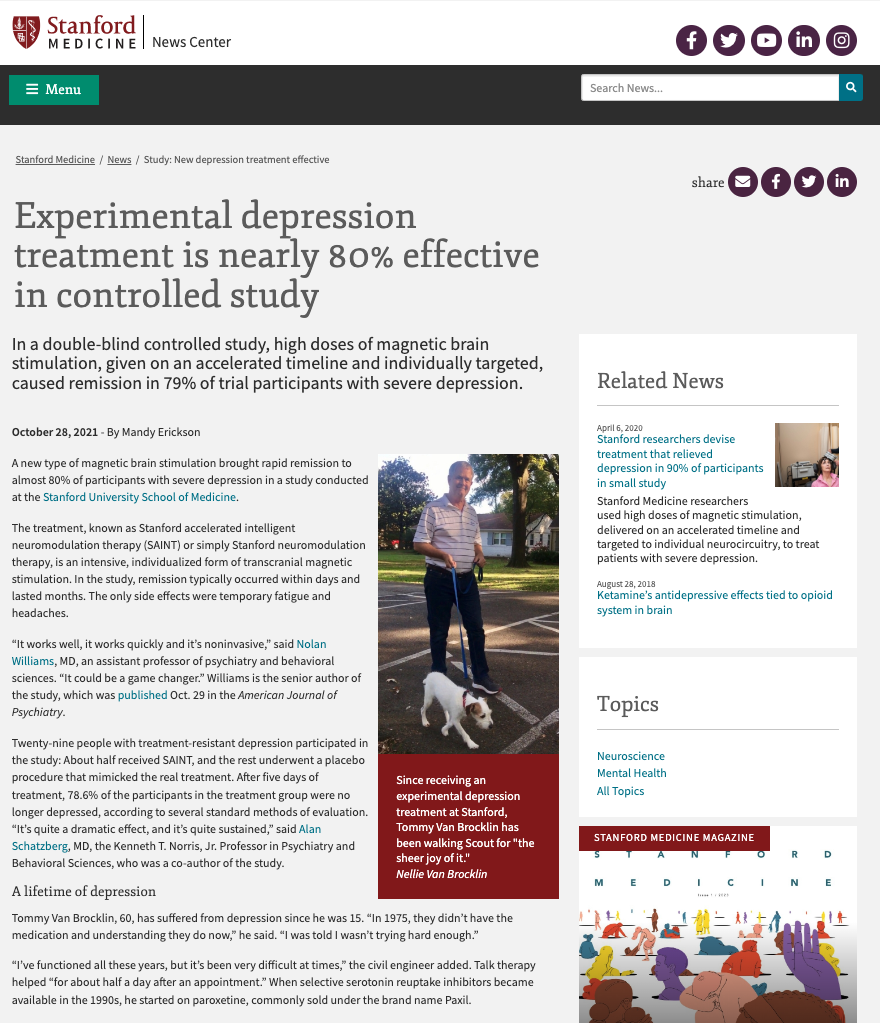
What is the SAINT Protocol?
SAINT stands for Stanford Intelligent Accelerated Neuromodulation Therapy. This protocol was developed at Stanford University and published in the American Journal of Psychiatry.
In essence, SAINT is a program of accelerated TMS given in high doses, precisely targeted to each person’s specific brain circuitry based on their MRI data.
In the Stanford study, researchers found that SAINT significantly reduced depression symptoms in patients within five days. They also found that when using the SAINT protocol, “78.6% of the participants in the treatment group were no longer depressed.”
And the results from the SAINT protocol studies were so impressive that the FDA cleared it for commercial application.
How SAINT Protocol TMS Works
Standard Protocol TMS has been available to treat depression for decades, and has been proven to be highly effective. TMS uses magnetic pulses to target a specific area of the brain — the DLPFC 0r dorsolateral prefrontal cortex.
The DLPFC shows reduced activity in the brains of people people who have depression compared with those who don’t. The TMS equipment generates an electromagnetic pulse that stimulates the nerve cells and receptors in this region of the brain.
Standard TMS is normally six weeks of treatment. SAINT treatment, by comparison, lasts a total of five days. This is due to the type of TMS used and the precise targeting of that treatment.
- While standard TMS delivers 600 pulses per session, SAINT delivers 1800 pulses per session.
- SAINT patients receive 10 sessions per day, each lasting approximately 10 minutes, instead of one per day with standard TMS, which lasts approximately 37 minutes.
- Each SAINT session builds upon the previous one, which amplifies the antidepressant effect.
- SAINT uses a functional connectivity MRI (fcMRI) to narrow in on the precise area to target in each patient’s brain. Standard TMS does not have this ability.
Therefore, with SAINT, a patient receives the same “dose” of brain stimulation but in much shorter treatment sessions and over a condensed period.
In essence, SAINT is a highly targeted form of accelerated TMS that is personalized to each patient based on precise MRI studies.
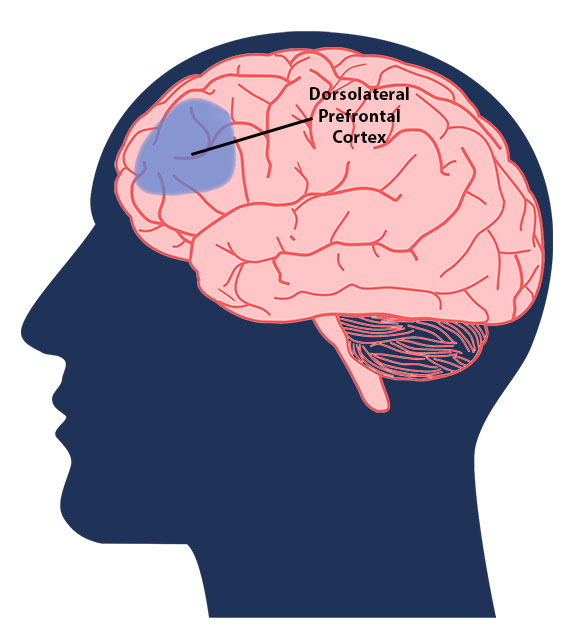
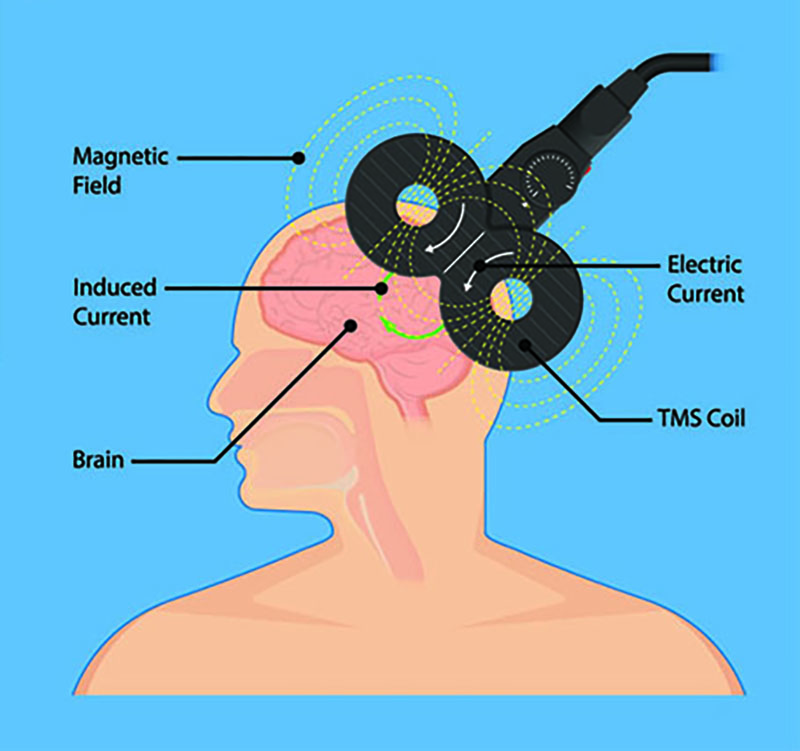
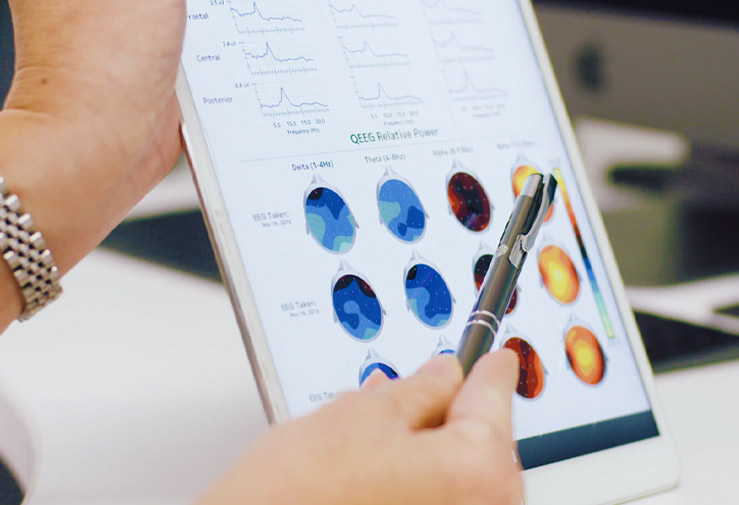
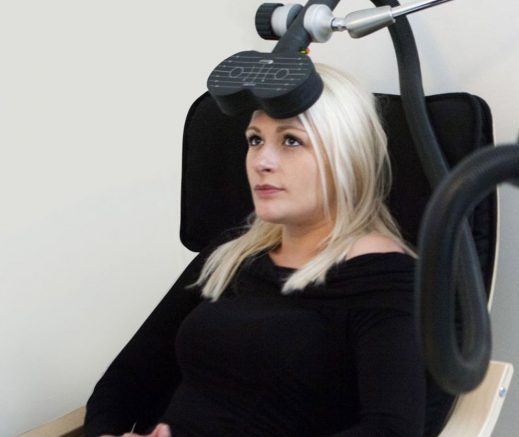
How Does MeRT Treatment Compare to the SAINT Protocol?
MeRT is also a TMS-based treatment for depression which has been proven to be highly effective. Multiple studies of MeRT protocols show significant results in reducing depression symptoms.
While MeRT and the SAINT protocol have certain differences, they are also similar in many ways. Here’s how they compare:
- Both MeRT and SAINT are highly targeted to each person. SAINT uses an MRI to locate the precise area of the brain to target, while MeRT uses a qEEG or quantitative electroencephalogram. This qEEG shows the exact brainwave imbalance contributing to depression symptoms. Then MeRT uses targeted TMS on those precise areas.
- SAINT requires intense treatment, 10 hours a day for five days, meaning patients have to take extended time away from home and work for treatment. MeRT is an outpatient service, one treatment a day, five days a week, in two-week intervals.
- The specific equipment used in the SAINT protocol is not yet available in clinics. The equipment used in the MeRT protocol is available in every Brain Treatment Center.
- While some insurance covers TMS for depression treatment, it only covers one treatment a day. SAINT is 10 treatments per day, so insurance, if available, would only cover one of those treatments.
- SAINT is specifically used for Treatment-Resistant Depression. MeRT also treats TRD but can also be used to treat a wide variety of neurological disorders such as PTSD, Traumatic Brain Injury, Autism Spectrum Disorder, and many more — with incredible results.
MeRT Can be the First Step to a Happier Life!
MeRT has helped thousands of people free themselves from the debilitating symptoms that come from untreated neurological conditions.
Your brain is unique. And MeRT treatment is tailored to your unique brain.
By optimizing brain communication and function, MeRT can help you live the life you deserve.
Take the next step by clicking on the box below, and find out what MeRT can do for you.